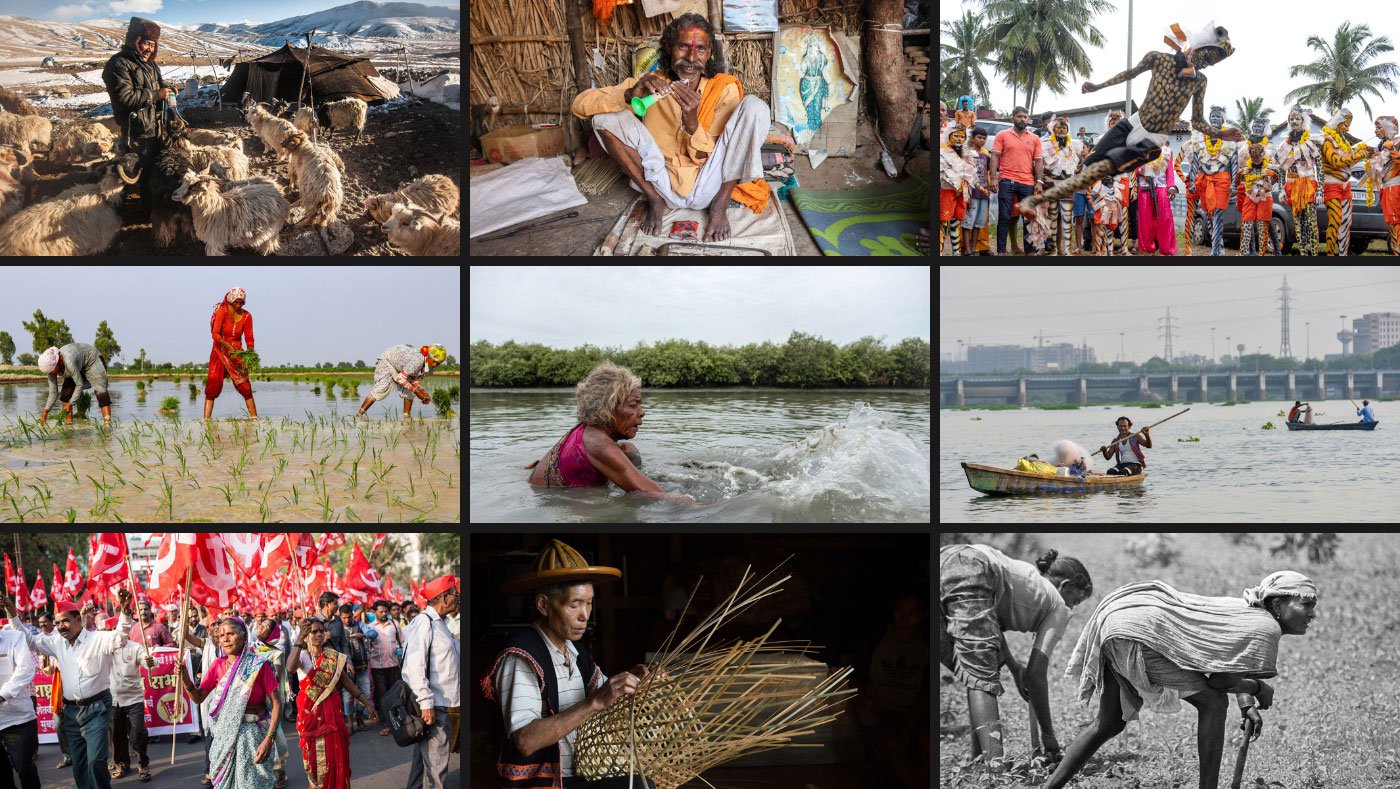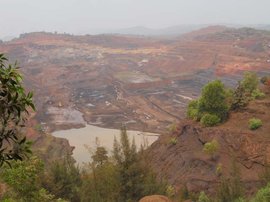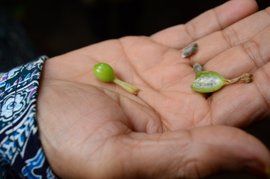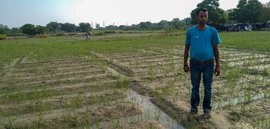In a mainstream publication job in the 2000s, you were likely to be given assignments to write about whisky pairings and pet weddings rather than ordinary people’s pressing issues. Holding on to your ideals would result in you being labelled as a ‘jholawala’ (literally, one who carries a tote bag, an image commonly associated with left leaning activists in north India, and used as a disparaging term).
There was no coverage of rural India which comprises 69 per cent of the country — its 833 million people who speak roughly 800 languages — occupy just 0.67 per cent of the front page of print news publications, says a 2014 study conducted by the Centre for Media Studies. News reports from New Delhi alone make up 66 per cent of the news on the main page of national dailies, it said.
“After 35 years in journalism, I found not a single newspaper or TV channel had dedicated reporters working full time on agriculture, labour, and all vital social sectors. They have full-time correspondents on Bollywood, high society events, business, and no full-time correspondents for farming and labour. It’s against this background that the idea of the People’s Archive of Rural India (PARI) was born,” says Palagummi Sainath, PARI’s founder-editor, an eminent journalist who has won over 60 journalism prizes in his 43 years of covering the Indian countryside.
PARI, a multimedia storehouse about the everyday lives
of everyday people, is a living journal and an archive. An initiative of the
CounterMedia Trust, it started out with less than a dozen people in December
2014. It began as a rural journalism site and has grown to include an online
library of official reports and rare documents on rural India, arts from and
about rural life, and an education initiative. PARI generates original field
stories in the form of text, photographs, illustrations, audio, videos and
documentaries. They cover the lives of ordinary Indians and encompass labour,
livelihood, craft, crisis, stories, songs, and more.


PARI is also an archive of culture: Narayan Desai’s jugaad with the shehnai in Belgaum (left), and Pili vesha folk dance (right) from coastal Karnataka


Bamboo basket weaver Mako Lingi in Arunachal Pradesh (left) and P. Sainath's 'Visible Work, Invisible Women: A lifetime bending' series look at labour across rural India
The seeds for PARI were sown in Sainath’s classrooms where, in his 35 years as an educator, he has trained over 2,000 journalists with a strong foundation in the ethics of reporting. This helped aspiring journalists, including me, to contextualise inequalities and injustices, and apply our conscience as a prism in the professional world.
“Through the years, one thing has remained constant—the idealism that has drawn each of us to PARI, all inspired by the compelling stories of rural Indians,” says Namita Waikar, PARI’s Managing Editor. PARI has been an ‘oxygen bar’ for journalists feeling choked by mainstream emissions.
Archiving the Forgotten
PARI’s stories are situated in a point of time—we are journalists after all—yet timeless, because it’s also an archive. In an ideal world, PARI would not be necessary, but as Sainath says, “PARI, 25 to 50 years hence, will be the only database that Indians can turn to in order to learn anything about how people lived and worked in the rural India of our times.”
When the mainstream media was inundated with visuals of the Delhi flood in July 2023, we wrote about what they left out—the cost of displaced farmers rebuilding their homes and livelihoods. Ordinary people and their lives—structurally complex, emotionally tenuous—are at the centre of the narrative. These are not stories from a faraway land of mythical people. Until a few generations ago, every urban Indian lived in a village. PARI’s goal is to create a bridge of empathy between its readers and subjects—an English-speaking urban Indian is granted insight into the lived lives of rural counterparts; a Hindi-reading farmer can learn about other farmers in different parts of the country; young people are introduced to history not taught in textbooks; researchers delve into vanishing crafts and livelihoods.
Reporting for PARI has helped me, as a journalist, to
localise, immerse, and understand larger development processes rather than
simply snapping one-off events without context. I was born and raised in New
Delhi but it was only through research for PARI, as part of a nation-wide
series on climate change, that I learnt that 3 kms from where I live, tortoises
and Gangetic dolphins used to frolic in the Yamuna river until 40 years ago! I
referred to the Delhi Gazetteer (1912), interviewed Yamuna’s last remaining
farmers
and
fisherfolk
, and identified the links between
the present and the past so that I could pose questions for the future. I went
back to report on their
displacement for development
post pandemic,
and the destruction caused by the
2023 flood
. This helped me develop a level of
expertise on the issue as opposed to the ‘parachute reporting’ (coming in only
during a crisis event without connection to the community) which mainstream
reporting often demands. You come away better informed as a journalist, with
some confidence about the issues, and the ability to discuss them at relevant
panels and discussions—thus taking the stories and issues further and wider.


Stories on the Yamuna river in Delhi by Shalini Singh are about the science of climate change but foregrounded with the voices of people most impacted by it
Many of the people in PARI’s stories are those who suffer economic and social trauma at various levels and layers. It’s a human need to be seen and heard. The people PARI reports about are active participants in their own stories. When I reported on the Yamuna farmers in English, I shared the Hindi versions of my work with them, and received their feedback. People don’t owe us their stories because we are journalists; we have to earn their trust for them to share with us.
Art, like journalism, aims to keep a society in conversation with itself. So, PARI embraces creative writing too. “Sometimes poetry is the only space where one can speak the truth. PARI gives space to simple, poignant and raw poems that often come from the heartland of rural India, in its many tongues,” says Pratishtha Pandya, PARI’s poetry editor. As a journalist, I have written poetry to capture stories that weren’t suited to a traditional report .
A Public Good
Journalism, as a function of democracy, necessitates fact-checking, editorial standards, and telling the truth about power, all of which are built into its process. But these principles are getting lost in the burgeoning of social media even as newer forms of journalism take shape. Smaller organisations and freelance journalists can today tell stories on platforms like YouTube, but having the resources to go out and report, build audiences, and earn viably remain challenges.
“PARI and its journalists are safeguarding the fourth
pillar. We are keeping alive the legacy of Mirat-Ul-Akhbar [journal founded by
reformer Raja Rammohan Roy in 1822 that critically examined the British
policies of the time], Kesari [brought out by freedom fighter Lokmanya Bal
Gangadhar Tilak in 1881], and others that we got from the independence
struggle, on meagre finance, supporting ourselves by doing other side gigs,”
says Siddharth Adelkar, PARI’s Tech Editor.


Farming stories are not just about agricultural issues. In Sri Muktsar Sahib district (left) children of landless Dalit labourers, start working in the fields at an early age. PARI writes and photographs diverse occupations. Govindamma (right) dives for crabs in Chennai's Buckingham canal

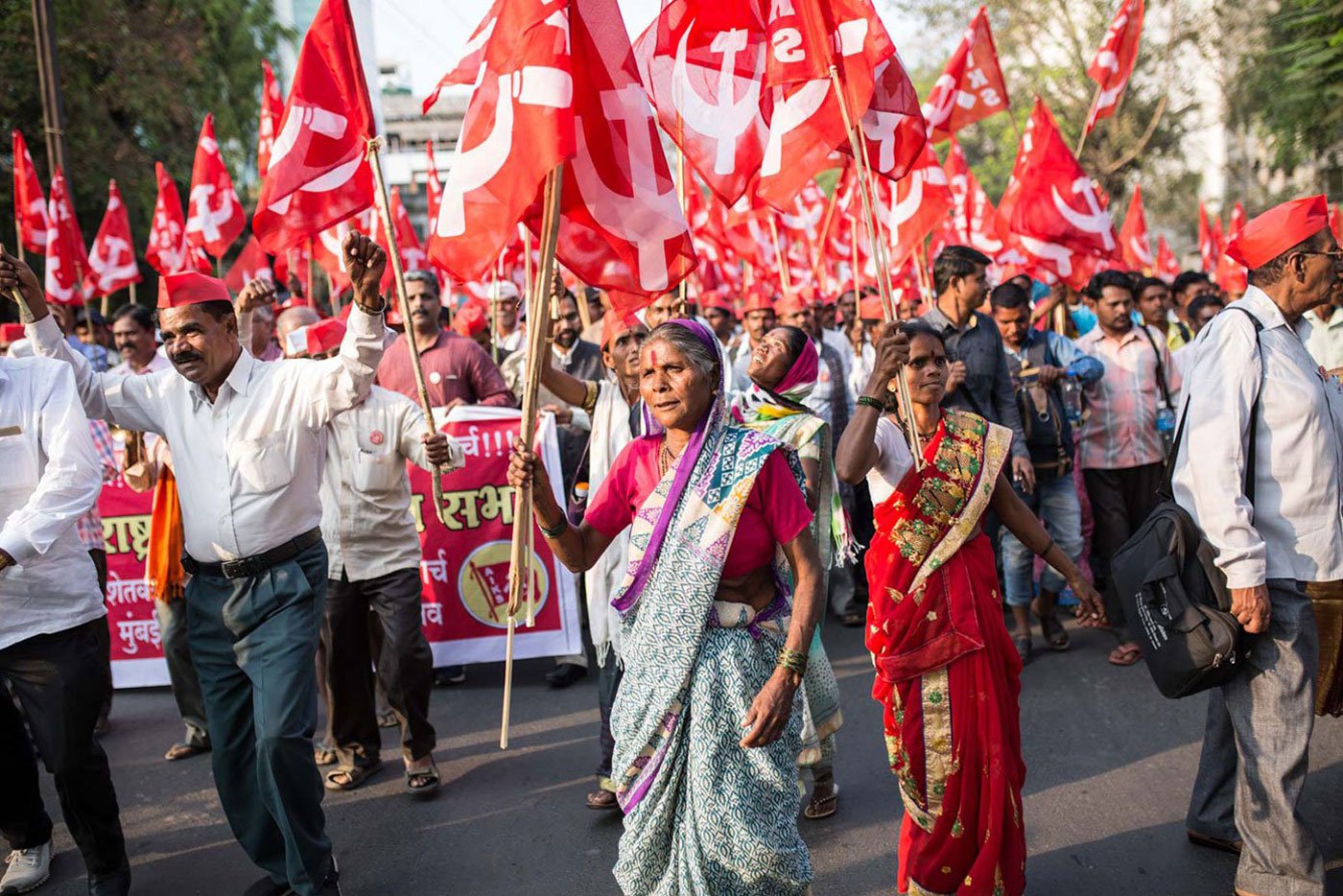
Communities who depend on the land for their lives and livelihoods are fighting climate change and discriminatory policies: The Changpas who make cashmere in Ladakh (left) and Adivasis marching for forest rights in Mumbai
As a non-profit journalism outfit, PARI relies on public donations, project-related funds from foundations, CSR funds, donations from the trustees themselves, and volunteer labour in areas such as tech. PARI’s 63 journalism awards have brought in at least five lakh rupees. While mainstream media remains celebrity and advertising centric, increasingly kowtowing to the ruling establishment, PARI doesn’t run advertisements, or accept funding that comes with interfering riders. Ideally, PARI should be completely crowd-funded, answerable only to its audience.
The content is creative commons; there are no pay-walls; and people can freely reprint content with due acknowledgment. All articles get translated into 15 Indian languages, including English, by PARIBhasha, the translations team. “Language is the vessel that carries diversity. I look at translation from the lens of social justice. India being a multilingual region, it’s on us to disseminate knowledge through translation. PARI’s translation programme is based on the principle of democratisation of languages as opposed to having one language that would rule the world’s most complex and diverse linguistic region,” says Smita Khator, Ediitor, PARI-Bhasha.
PARI is also focused on creating material that is used and created by students and teachers. It’s education arm engages with school and college students in the metros, showing them that a global citizen is not only one who is fluent in a foreign language and apprised of world events but someone rooted in realities 30-50-100 kms from them where people most likely speak a different Indian dialect. “We see students’ stories [published on PARI] as examples of PARI’s pedagogy of experiential learning, pushing kids to challenge norms, equipping them to ask questions: Why are people forced to migrate? Why do women workers in tea estates not have access to nearby toilets? A young girl asks why her relatives and neighbours—women in Uttarakhand—are still treated as ‘impure’ during their monthly period; she asks young boys in her class if they will do the same,” shares Priti David, PARI’s Executive Editor.
Rural India holds many unique and diverse stories, of people, languages, professions, arts and more. PARI is a ‘textbook for the future’, documenting and archiving these stories even as they are changing and disappearing, making them accessible in several languages, and taking rural journalism to classrooms. PARI aims to ultimately situate a fellow in every one of India’s 95 historical regions to tell the tales of “the everyday people who actually keep the substance, the heart and soul of the country alive,” as Adelkar puts it. For us at the PARI-var, this isn’t just journalism. It’s a practice to be, and stay, human.
The original version of this essay was commissioned by Dark ‘n Light and originally published on their website in December 2023.